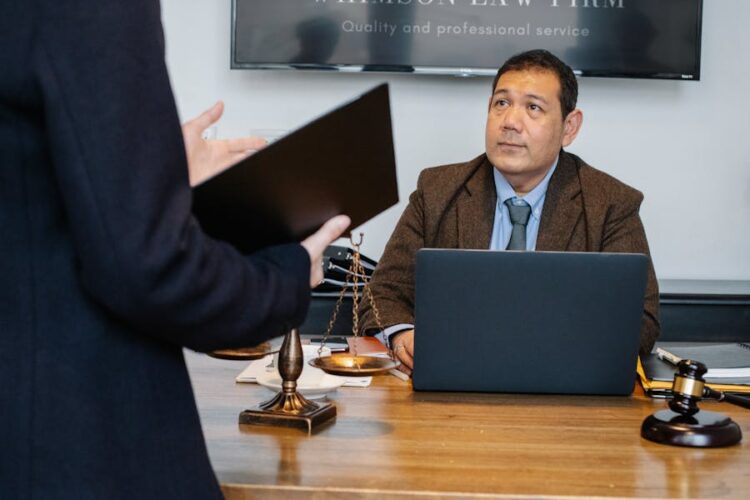The legal landscape is rapidly transforming with technology becoming integral to every aspect of litigation. Once a time-consuming and laborious task, evidence verification is now being revolutionized by innovative solutions.
Statista notes that the legal technology industry was estimated to be worth $28 billion globally in 2022 and is expected to continue expanding. AI, NLP, and robotic process automation are a few examples of the technologies being used to improve the efficacy and affordability of legal services.
These technological advancements streamline the process, making it more efficient and accurate. As a result, the legal field is experiencing significant improvements in handling and verifying evidence.
In this article, we’ll discuss five key ways technology is streamlining evidence verification and enhancing the effectiveness of legal proceedings.
Streamlining Authentication with Automated Systems
Gone are the days of demanding manual document verification. Legal professionals can now leverage automated systems powered by advanced algorithms, often incorporating artificial intelligence (AI), to accelerate the authentication process. These AI-powered systems analyze digital documents for inconsistencies, alterations, and anomalies, highlighting potential red flags for further investigation.
This saves valuable time while ensuring a more thorough and objective assessment of evidence authenticity. For instance, AI document verification software can dive deeper than simple comparisons. AI can detect potential forgeries that might escape the human eye by analyzing document formatting, font styles, and even subtle inconsistencies in character spacing.
Additionally, AI can be trained on vast datasets of known fraudulent documents, allowing it to identify patterns and signatures of manipulation. However, Forbes notes that having unique data is critical for maintaining dependability in such cases. It is essential to collect unique data, properly label it, and continually monitor and update the system using real-world data.
AU10TIX highlights that this integration of AI into document verification systems streamlines the process significantly, freeing up lawyers’ time. With a high degree of confidence in the authenticity of evidence, legal teams can build stronger cases and advocate effectively.
Hidden Evidence with Digital Forensics
Digital forensics plays a critical role in extracting and analyzing digital evidence from electronic devices and online sources. With the ever-increasing reliance on digital communication and storage, digital forensics tools have become invaluable.
Gartner highlights that forensic software can recover deleted files, analyze metadata, and identify hidden partitions on storage devices. This allows legal professionals to look at communication records, electronic documents, and even digital footprints that could be vital to their case.
Additionally, advanced forensic techniques can be used to analyze social media activity, internet browsing history, and other online data. It provides valuable insights into the actions and intentions of parties involved in a legal dispute.
Lawyers can paint a more complete picture of the events at hand by utilizing digital forensics tools. This comprehensive understanding of the digital landscape strengthens their arguments and increases the chances of a favorable outcome.
The Fight Against Deepfakes and Fabricated Media
The rise of sophisticated deepfake technology has introduced a new challenge in evidence verification. Deepfakes are manipulated videos or audio recordings that can be incredibly realistic, potentially creating fabricated evidence. However, technology is also providing solutions to combat this threat.
eWEEK notes that advanced analysis tools can now detect subtle inconsistencies in deepfakes. This software scans for things such as unnatural blinking patterns or minute inconsistencies in voice pitch. Intel’s FakeCatcher and Video Authenticator by Microsoft are two examples of such software.
Additionally, algorithms are being developed to trace the origin of manipulated media, potentially revealing the source of fabricated evidence.
These advancements in media verification technology are crucial for ensuring the integrity of evidence in the digital age. Legal professionals can be confident in the authenticity of video and audio recordings presented in court by utilizing these tools.
Transparency with Cloud-Based Evidence Management
Cloud-based evidence management systems offer a secure and centralized platform for storing, organizing, and sharing evidence. This streamlines collaboration between legal teams, allowing for efficient access and review of case materials.
Additionally, cloud-based systems provide robust audit trails that document user activity and access, ensuring transparency and accountability throughout the legal process. The accessibility and transparency offered by cloud-based evidence management systems foster better communication and collaboration among legal professionals.
This improved workflow allows lawyers to focus on strategizing and building a strong case, ultimately leading to more efficient and effective litigation.
FAQs
How is AI used for authentication?
AI enhances authentication by using biometric data, such as facial recognition or fingerprints, to verify identities. It can also analyze behavioral patterns and detect anomalies to prevent unauthorized access. AI algorithms improve accuracy and security by adapting to new threats and user behaviors.
What is the role of digital forensics?
Digital forensics involves analyzing electronic devices and data to investigate and reconstruct digital events. It helps in uncovering evidence for legal cases, resolving cybersecurity incidents, and understanding data breaches. This field ensures the integrity and accuracy of digital evidence used in legal proceedings.
What are the dangers of deepfakes?
Deepfakes can create highly convincing but false images or videos, posing risks of misinformation and fraud. They can be used to damage reputations, manipulate public opinion, or commit identity theft. Their realism makes it challenging to detect and combat malicious uses effectively.
The legal system is undergoing a significant transformation due to the integration of technology. Legacy methods of evidence verification are being replaced by automated systems, digital forensics tools, and cloud-based storage. These advancements not only expedite the litigation process but also enhance the accuracy and reliability of evidence.
While challenges like deepfakes pose new hurdles, technological solutions are constantly being developed to combat them. Overall, the embrace of technology in legal proceedings is fostering a more efficient, secure, and just legal system.










